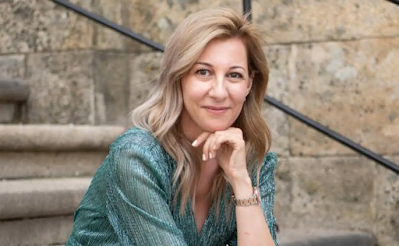I continue a minor tradition of publishing Bill’s Best of Fiction on December 31. I like to make it a genuine assessment of my reading for the full calendar year. My next post will have Bill’s Best of 2023 Non-Fiction and a personal category of Bill’s Most Interesting of 2023. The lists do include books published earlier than 2023.
For the best of 2023 fiction:
1.) The Discourtesy of Death by William Brodrick - My favourite work of fiction this year was written 10 years ago. I found it while browsing in The Sleuth of Baker Street bookstore in Toronto.
A book featuring a Gilbertine monk, Father Anselm, who was an English barrister before becoming a monk was an immediate attraction. And then I learned Brodrick had been an Augustinian monk prior to becoming an English solicitor.
What made the book the best was its exploration of death.
Jenny Henderson has been left a paraplegic after a fall and has terminal cancer when she abruptly dies.
I summed up the questions in my review:
Was Jenny murdered or given assistance in dying because she did not want a lingering death or did she die of natural causes?
The book was brilliant.
2.) A Quiet Flame by Philip Kerr - Second best is another book written years ago. A Quiet Flame is the 5th book in the Bernie Gunther series and was published in 2008.
Gunther has reached Argentina in 1950. He escaped from Germany with a pair of ex-SS officers. One of his traveling companions is Adolph Eichmann.
Kerr grabbed my attention when Gunther is welcomed by President Juan Peron. The President asks him to investigate the death of a teenage girl and the disappearance of another. Argentinian authorities think the cases might be connected to a German case Gunther worked on in 1932.
As Gunther investigates in Argentina there are flashbacks to the German investigation which is occurring months before the Nazis gained power in Germany.
The story flows seamlessly between the investigations in Argentina and Germany.
It is a fascinating twist that in 1950 Gunther has authority to investigate his “old comrades” where in 1932 he was subject to their power.
3.) A World of Curiosities by Louise Penny - Armand Gamache investigates a complex mystery that has connections to the mass murder of female engineering students 30 years ago at the École Polytechnique in Montreal, a mother who was murdered after allowing her children to be abused 10 years earlier and the discovery of a hidden room at the bistro in Three Pines.
The hidden room contained a marvel:
There is a secret to the bookstore that has been hidden for 160 years. There is a hidden room. The room was bricked and plastered over in the 19th Century. It is a locked room mystery as to its creation and that inside are several items and a copy of The Paston Treasure painting to which have been added images that range from the 1600’s to our time. A grimoire, a book of spells, from the 17th Century is also found in the room.
The symbolism within the painting is from the minute to the massive. The symbolic power of the spells is intense. The consequences for those who create symbols and invoke spells has its own symbolism.
Had the ending been less Hollywood it would have been my favourite fiction of 2023.
3.) Sunset and Jericho by Sam Wiebe - I too often find noir just dark. Wiebe has the ability to have balance amidst the bleakness.
Vancouver private investigator, Dave Wakeland, sets out to find the missing brother of the mayor and the missing handgun of a transit cop.
I noted that:
Only in Canada would it be credible that a carefully orchestrated attack be made on a security officer to get a handgun. In America the attack would be disregarded as fantasy. An American needs only to stroll down to the neighbourhood gun shop to get a handgun.
The investigation takes him to an extremist group called Death of Kings. The zealots in the group are frightening.
Dave is a classic lone P.I. who, in the best traditions of hard boiled detectives, will not be intimidated:
You can’t prevent being threatened, and you can’t win them all. But you can hold them to account.
There’s no forgetting with matters of violence.
I found the resolution both credible and surprising.
Wiebe has developed an enduring Canadian sleuth.
Happy New Year to readers near and far!







